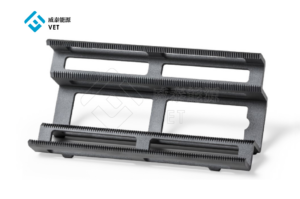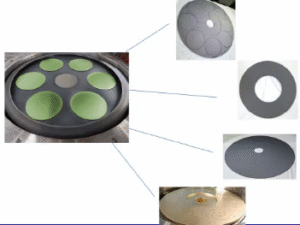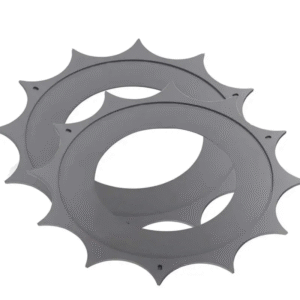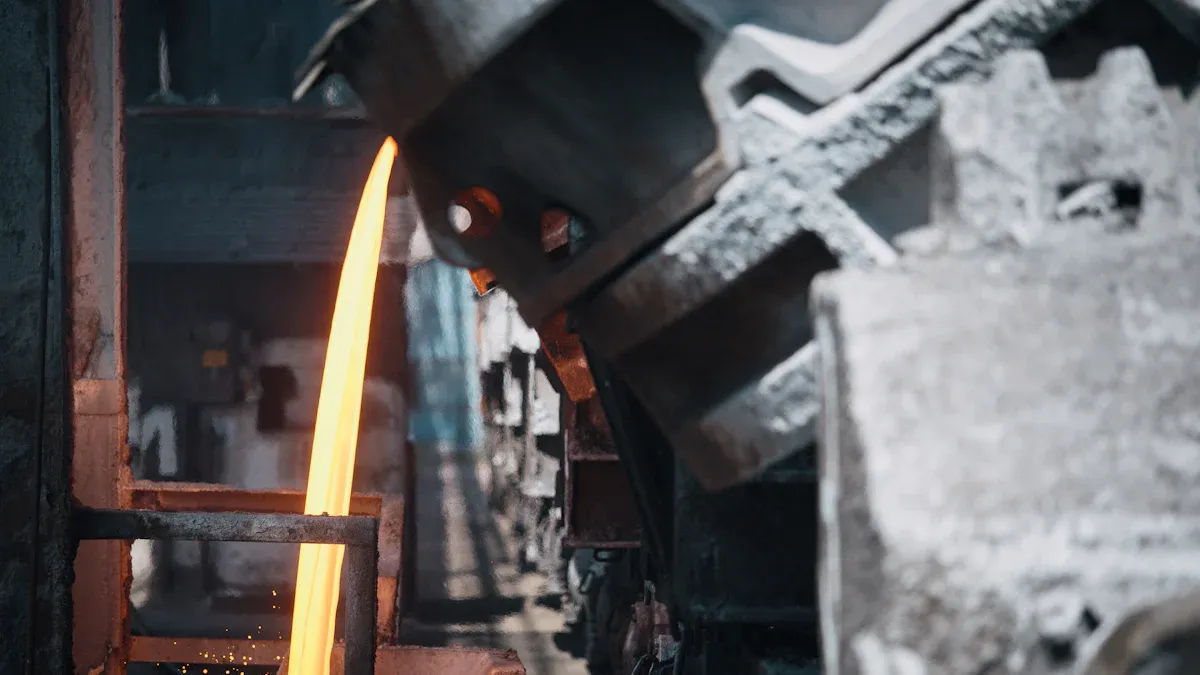
Graphite Rotors are essential components in molten metal pumping systems, offering exceptional durability and efficiency even under extreme conditions. Their remarkable thermal shock resistance helps maintain consistent molten metal temperatures during aluminum production, while their chemical inertness ensures protection against corrosion in high-temperature applications such as chemical vapor deposition. Additionally, GRAPHITE SUSCEPTOR technology is widely utilized in industries like aerospace, where graphite’s lightweight strength is critical for turbine engines and defense systems. Ningbo VET Energy Technology Co., Ltd specializes in delivering tailored solutions, including advanced Graphite Rotor&Vane designs and high-quality Graphite Block products, to meet the rigorous demands of these industries.
Key Takeaways
- Graphite rotors keep molten metal flowing smoothly and stop contamination. This helps make better products.
- They handle quick temperature changes without breaking, cutting waste and boosting work speed.
- Graphite rotors clean metal by taking out impurities during degassing. This is very important for car and airplane industries.
The Role of Graphite Rotors
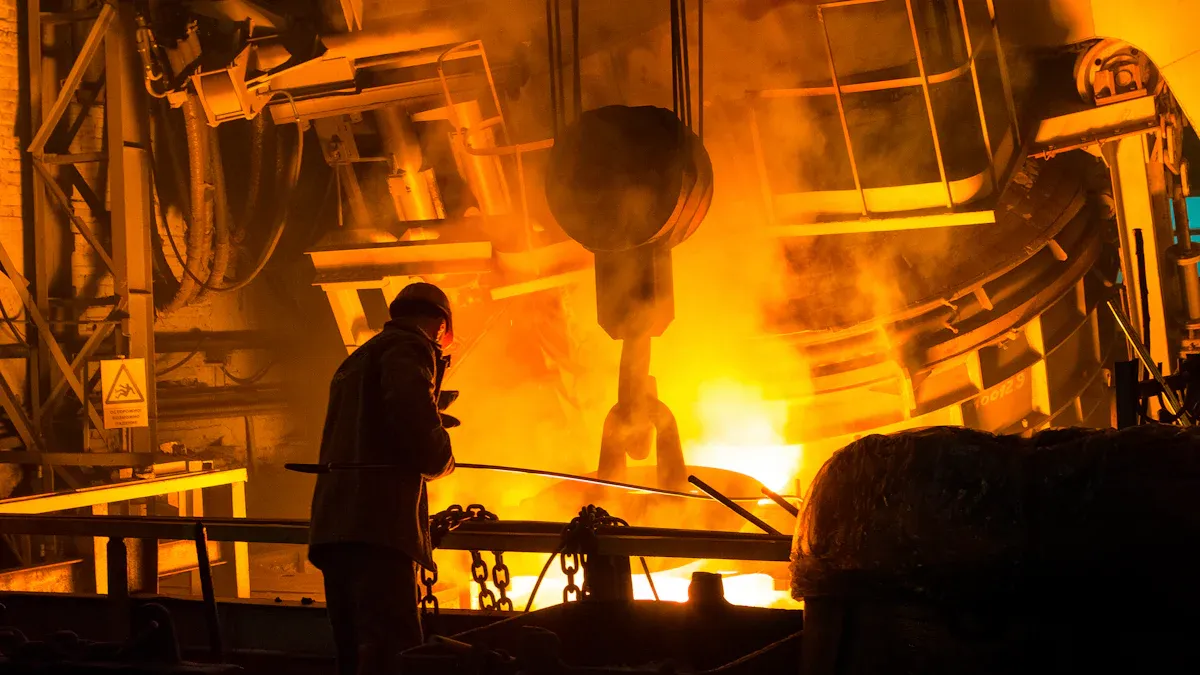
Maintaining Flow and Preventing Contamination
Graphite rotors play a pivotal role in maintaining the flow of molten metal within pumping systems. Their unique design ensures consistent agitation, which prevents the formation of stagnant zones in the molten metal. This uniform flow minimizes the risk of solid inclusions settling at the bottom of the system, which could otherwise compromise the quality of the final product.
In addition to maintaining flow, graphite rotors act as a safeguard against contamination. Their chemical inertness prevents reactions with molten metals, ensuring that no unwanted impurities are introduced during the process. This property is especially critical in industries like aluminum casting, where even minor contamination can lead to defects in the final product. By using graphite rotors, manufacturers can achieve higher levels of product consistency and quality.
Enhancing Gas Removal and Metal Purity
Graphite rotors are essential for degassing molten metals, a process that significantly enhances metal purity. During rotary degassing, the rotor injects inert gases, such as argon or nitrogen, into the molten metal. These gases form bubbles that rise to the surface, carrying with them dissolved hydrogen and other impurities. This process not only improves the cleanliness of the metal but also reduces the risk of defects in the final cast.
A study on rotary degassing treatments for Al–Si casting alloys highlights the effectiveness of graphite rotors in improving melt quality. The research demonstrates that rotary degassing, especially when combined with fluxing, significantly reduces inclusion and solute hydrogen content. This improvement in metal purity is vital for meeting the stringent quality standards required in industries like automotive and aerospace. By ensuring cleaner molten metal, graphite rotors contribute to the production of high-performance components with superior mechanical properties.
Ningbo VET Energy Technology Co., Ltd offers advanced graphite rotor solutions tailored to meet these industrial demands. Their products are designed to optimize gas removal and maintain the highest levels of metal purity, ensuring reliable performance in critical applications.
Key Benefits of Graphite Rotors
Exceptional Thermal Shock Resistance
Graphite rotors excel in environments where rapid temperature changes occur. Their ability to withstand thermal shock ensures uninterrupted performance in molten metal systems. Unlike many materials that crack or degrade under sudden temperature fluctuations, graphite maintains its structural integrity. This property is crucial in applications like aluminum casting, where consistent agitation of molten metal is required to prevent defects.
A study of molten metal operations highlights graphite’s ability to recover up to 98% of metal during processing. This high recovery rate stems from graphite’s resistance to thermal stress, which minimizes dross formation and ensures efficient metal utilization. Manufacturers benefit from reduced waste and improved productivity, making graphite rotors indispensable in high-temperature systems.
Chemical Inertness for Corrosion Resistance
Graphite rotors offer exceptional resistance to chemical corrosion, making them ideal for handling molten metals and other reactive substances. Their inert nature prevents reactions with chemicals such as sulfur dioxide, benzene, and hydrocarbons, ensuring long-term durability and contamination-free operations.
Industries rely on graphite components for various processes, including distillation, absorption, and stripping operations. For example:
- Graphite columns are used in distillation systems to handle corrosive chemicals.
- Graphite internals enhance absorption processes by resisting chemical wear.
- Graphite packing and trays ensure reliable performance in stripping operations.
The following table illustrates graphite’s corrosion resistance against common chemicals:
| Chemical | Corrosion Resistance |
|---|---|
| Benzene | High |
| Sulfur Dioxide | High |
| Petroleum | High |
| Formaldehyde | High |
| Hydrocarbons | High |
| Mercury | High |
This resistance ensures that graphite rotors maintain their functionality even in harsh environments, reducing maintenance costs and downtime.
Lightweight Design for Improved Agitation
Graphite rotors are significantly lighter than their metal counterparts, which enhances their ability to agitate molten metal effectively. The lightweight design reduces the energy required for rotation, making the system more efficient. Additionally, the reduced weight minimizes wear on the pumping system, extending its operational lifespan.
In molten metal systems, efficient agitation is critical for maintaining uniform temperatures and preventing inclusions. Graphite rotors achieve this with ease due to their optimized design and material properties. Their lightweight nature also simplifies installation and handling, making them a preferred choice for industries like aluminum recycling and non-ferrous metal processing.
Long Service Life and Cost-Effectiveness
Graphite rotors deliver exceptional durability, ensuring a long service life even in demanding conditions. Their resistance to wear, corrosion, and thermal stress reduces the need for frequent replacements, lowering operational costs. This cost-effectiveness makes them a valuable investment for industries that rely on molten metal systems.
The following table highlights performance indicators that contribute to their long service life:
| Indicator | Benefit |
|---|---|
| Increased metal recovery | High rates of metal recovery up to 98% |
| Reduced dross formation | Minimal surface turbulence leads to less dross |
| Enhanced service life | Graphite components increase service life |
| Versatility in handling scrap | Rugged system for various scrap types |
Ningbo VET Energy Technology Co., Ltd provides high-quality graphite rotors designed to maximize these benefits. Their products ensure reliable performance, making them a cost-effective solution for industries like aluminum casting and non-ferrous metal processing.
Comparison with Alternative Materials
Advantages Over Metals in High-Temperature Applications
Graphite rotors outperform metal alternatives in high-temperature environments due to their superior material properties. Metals, such as iron and steel, often struggle with thermal stress and corrosion when exposed to molten metals. Graphite, on the other hand, offers enhanced heat conductivity and resistance to cracking during prolonged operations.
Key performance advantages include:
- Higher carbon content: Graphite rotors contain 3.6–3.9% carbon, compared to 3.0–3.5% in iron rotors. This composition improves heat conductivity, ensuring stable performance under extreme temperatures.
- Reduced vibrations and noise: The graphite structure minimizes operational disturbances, leading to smoother system functionality.
- Improved durability: Graphite resists thermal shock better than metals, reducing the likelihood of failure during high-stress applications.
These attributes make graphite rotors indispensable for industries requiring reliable and efficient molten metal systems. Ningbo VET Energy Technology Co., Ltd leverages these advantages to deliver high-quality graphite solutions tailored to industrial needs.
Why Graphite Outperforms Ceramics in Molten Metal Systems
Ceramics, while known for their heat resistance, fall short in several critical areas when compared to graphite. Their brittleness makes them prone to cracking under mechanical stress, limiting their lifespan in dynamic systems. Graphite, with its unique combination of strength and flexibility, offers a more robust solution.
| Feature | Graphite | Ceramics |
|---|---|---|
| Thermal Shock Resistance | High | Moderate |
| Mechanical Strength | Flexible | Brittle |
| Service Life | Long | Short |
| Ease of Machining | Excellent | Limited |
Graphite rotors also provide better agitation and gas removal efficiency due to their lightweight design. This ensures uniform metal temperatures and improved purity, which are essential for industries like aluminum casting and recycling. Ningbo VET Energy Technology Co., Ltd specializes in graphite rotor solutions that maximize these benefits, offering unmatched performance in molten metal systems.
Applications and Industries
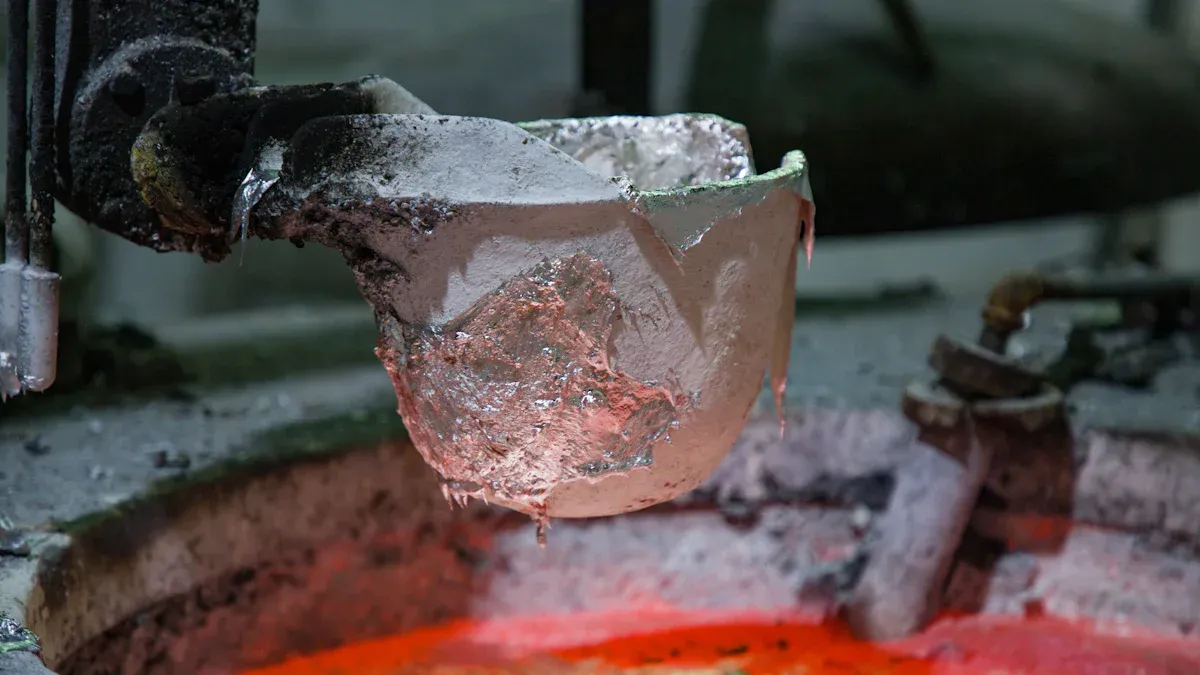
Aluminum Casting and Recycling
Graphite rotors are indispensable in aluminum casting and recycling processes. They play a critical role in degassing molten aluminum, a step essential for reducing hydrogen levels and minimizing microporosity in alloys like A356 and 319. This ensures the production of high-quality castings with superior mechanical properties. Industries such as automotive, aerospace, and electronics rely on these castings for lightweight, durable components.
The use of graphite rotors in degassing units enhances production efficiency. For instance, advanced methods like ultrasound treatment have demonstrated reduced scrap rates compared to traditional argon rotary degassing. This efficiency not only improves casting quality but also extends the service life of graphite rotors. Ningbo VET Energy Technology Co., Ltd provides tailored graphite rotor solutions designed to meet the rigorous demands of aluminum foundries.
Non-Ferrous Metal Processing
Graphite rotors are equally vital in the processing of non-ferrous metals like zinc, magnesium, and copper. Their chemical inertness and thermal shock resistance make them ideal for handling these reactive materials. In zinc processing, for example, graphite rotors ensure consistent agitation and gas removal, leading to purer end products.
The growing demand for lightweight metals in industries such as construction and transportation has further increased the reliance on graphite rotors. Their ability to withstand harsh operating conditions ensures reliable performance in these high-temperature environments.
Other Industrial Applications of Graphite Rotors
Beyond metal casting, graphite rotors find applications in diverse industries. They are used in chemical processing systems for their corrosion resistance and in vacuum furnaces for their thermal stability. Additionally, they play a role in the production of semiconductors, where contamination-free operations are critical.
Industries benefit from the versatility of graphite rotors, which deliver consistent performance across a wide range of applications. Ningbo VET Energy Technology Co., Ltd specializes in providing high-quality graphite solutions tailored to these varied industrial needs.
Graphite rotors ensure the efficiency and safety of molten metal pumping systems. Their thermal shock resistance and chemical inertness make them superior to other materials. Industries like aluminum casting rely on these components for consistent performance. Ningbo VET Energy Technology Co., Ltd delivers high-quality graphite solutions tailored to industrial needs.
FAQ
What makes graphite rotors superior to metal alternatives?
Graphite rotors resist thermal shock, corrosion, and wear better than metals. Their lightweight design enhances efficiency, making them ideal for high-temperature molten metal systems.
How do graphite rotors improve molten metal purity?
Graphite rotors inject inert gases during degassing. This process removes impurities like hydrogen, ensuring cleaner metals and higher-quality final products.
Which industries benefit most from graphite rotors?
Industries like aluminum casting, non-ferrous metal processing, and chemical manufacturing rely on graphite rotors for their durability, efficiency, and contamination-free performance.


